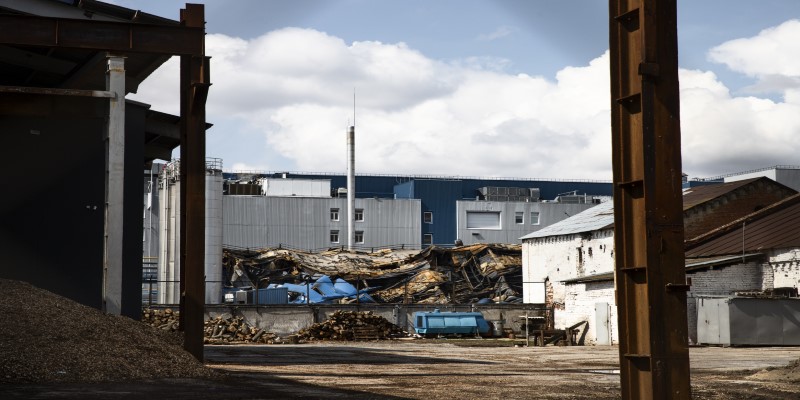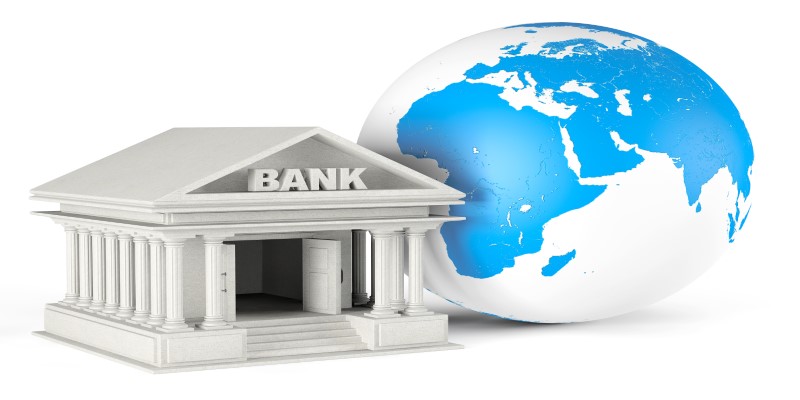The Bretton Woods Agreement: Reimagining the Global Economy
Dec 05, 2023 By Susan Kelly
In the aftermath of World War II, as nations sought to rebuild and stabilize their economies, a historic meeting took place in Bretton Woods, New Hampshire, in 1944. This gathering, known as the Bretton Woods Conference, led to the creation of the Bretton Woods Agreement, which played a crucial role in reshaping the global financial landscape.
In this article, we'll delve into the Bretton Woods Agreement, its significance in replacing the Gold Standard, the reasons behind its necessity, the roles of the International Monetary Fund (IMF) and the World Bank, and the eventual collapse of the Bretton Woods System.
Replacing the Gold Standard
Before we dive into the Bretton Woods Agreement, let's rewind a bit and understand the pre-existing international monetary system: the Gold Standard. This system, prevalent in the late 19th and early 20th centuries, pegged a country's currency to a specific amount of gold.
It was believed that this fixed exchange rate system would ensure stability and prevent inflation. However, the Gold Standard had its drawbacks. One major limitation of the Gold Standard was its inflexibility. Countries couldn't easily adjust their exchange rates to respond to changing economic conditions.
Also, during times of economic crises, governments often found themselves in a bind, as they couldn't increase the money supply without acquiring more gold, which was not always feasible. The Great Depression of the 1930s further exposed the weaknesses of the Gold Standard.
As countries faced economic hardships, they abandoned the gold peg to print more money, leading to competitive devaluations and economic instability. By the time World War II ended, it was clear that a new international monetary system was needed to promote economic stability and prevent a repeat of the disastrous economic policies that had contributed to the Great Depression and global conflict.
Why the Bretton Woods Agreement Was Needed?
The Bretton Woods Agreement was the answer to these problems. It aimed to establish a more flexible and stable international monetary system. Here's why it was needed:
Post-War Reconstruction
In the aftermath of a devastating global conflict, the world hungered for a sense of stability and hope. The Bretton Woods Agreement emerged as a beacon of light, offering a sturdy foundation upon which nations could painstakingly reconstruct their war-torn economies.

This historic pact paved the way for a future marked by global peace and collaborative efforts, answering the call of a world-weary from the horrors of war.
Preventing Competitive Devaluations
The shadow of the Great Depression still haunted the global economy, with painful memories of competitive devaluations exacerbating economic hardships. In response, the Bretton Woods Agreement emerged as a formidable shield, placing a strong emphasis on maintaining stable exchange rates to foster international trade and economic well-being.
Encouraging Economic Cooperation
The essence of Bretton Woods lay in its aspiration to promote international cooperation among nations. At its heart, it championed the pivotal notion of currency convertibility, enabling countries to seamlessly exchange their currencies.
This seemingly straightforward yet profoundly influential concept catalyzed global economic integration, uniting nations in a collective endeavor to pursue shared prosperity and economic stability.
Role of the IMF and World Bank
The Bretton Woods Agreement established two key institutions to oversee and support this new monetary system: the International Monetary Fund (IMF) and the International Bank for Reconstruction and Development, which later became part of the World Bank Group.
International Monetary Fund (IMF)
The IMF was created to help member countries maintain exchange rate stability by providing short-term financial assistance. It acted as a kind of financial safety net, offering loans to countries facing balance of payments crises. The IMF also monitored the economic policies of member countries to ensure they adhered to the agreed-upon exchange rate rules.
World Bank
The World Bank, on the other hand, was established to provide long-term loans and financial assistance to war-torn countries for reconstruction and development projects. Its primary goal was to reduce poverty and support economic development in member countries.

Together, the IMF and World Bank played vital roles in promoting global economic stability and growth.
The Collapse of the Bretton Woods System
While the Bretton Woods Agreement brought about a period of relative stability and economic growth, it wasn't without its challenges. The system began to show signs of strain in the 1960s and 1970s, and ultimately, it collapsed in the early 1970s. Here's why it fell apart:
Pressure on the U.S. Dollar: Under the Bretton Woods System, the U.S. dollar was the primary reserve currency, and its value was tied to gold. However, the U.S. faced mounting trade deficits and increased government spending on the Vietnam War, which led to a decline in its gold reserves. This put pressure on the dollar's peg to gold.
Nixon Shocks: In 1971, President Richard Nixon announced a series of economic measures, collectively known as the "Nixon Shocks." One of the key actions was the suspension of the dollar's convertibility into gold. This effectively ended the gold standard and marked the beginning of the end for the Bretton Woods System.
Floating Exchange Rates: With the collapse of the gold standard, currencies started to float freely against each other. Exchange rates were determined by market forces rather than fixed rates agreed upon at Bretton Woods. This increased volatility in currency markets.
End of Bretton Woods: In 1973, the Bretton Woods System officially ended, and the world transitioned to a system of floating exchange rates. This new system allowed currencies to fluctuate based on supply and demand, and it remains the dominant international monetary system to this day.
Conclusion
In summary, the Bretton Woods Agreement of 1944 was a pivotal moment in the history of international finance. It replaced the Gold Standard with a more flexible and cooperative system aimed at promoting global economic stability and cooperation. The IMF and World Bank played essential roles in supporting member countries and fostering development.
However, the Bretton Woods System faced challenges, especially as the U.S. dollar's peg to gold became unsustainable. Ultimately, it collapsed in the early 1970s, leading to the modern system of floating exchange rates.
Despite its demise, the legacy of Bretton Woods lives on in the principles of international monetary cooperation and the institutions that continue to shape the global economy.
Top of Form








